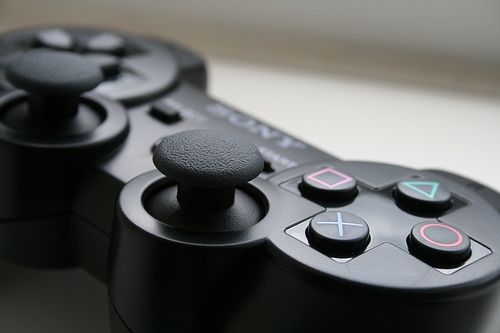In an interview with Famitsu magazine this week, original PlayStation master designer Teiyu Goto explains some technicalities of his workmanship as a 17-year creative lead behind every PlayStation console, including console controllers and other accessories. As Goto explains, he first became involved with the PlayStation project in the spring of 1993.

"I liked games and PCs a lot and messed around with them in my spare time, so it was great for me to work on what I liked doing the most. So I started traveling to the Aoyama office and talking with [Ken] Kutaragi about assorted things, and before long I began work on the design of the system [...] I thought up assorted designs for the console, but we wound up going with a very simple one in the end, a basic box with a circle on top for the CD-ROM," he said. "The console itself was a relatively easy design process, but we went through a great number of stages with the controller."
He continued by explaining that the Nintendo SNES controller was a huge hit at the time, emphasizing that Sony management did not want its PlayStation 1 controller to undergo a radical departure from a known successful competitor in the marketplace. "[Management] said it had to be a standard type of design, or gamers wouldn't accept it," he continued. Although he disagreed with the corporate mindset at the time, as did Sony's former president Norio Ohga, he had to work under the constraints and expectations of the financial heads competing for market share with Nintendo.

Goto also mentioned in his interview that management held hostile attitudes towards his initial controller designs. "They told me that the grip design was simply no good, that gamers wouldn't like it," Goto said. Ignoring management's request for a flatter controller feel, he remembered distinctly that company president Ohga held an aviation tenure flying airplanes and helicopters. "I still clearly remember him saying that 'the control stick is the most important part of any game,'" Goto recalled."We did wind up switching to a flatter controller design, and that survived all the way to the point where it was time to start making molds."
During a creative report and internal presentation with Sony management around that time, Goto recalls President Norio Ohga expressing discontent with the flat PlayStation controller design he was pressured into designing. "During that report I showed off the flat controller design, explaining that this is how game consoles work right now, and Ohga was totally livid at me. 'This is no good! Change it! What was wrong with what you showed me earlier?' It was a huge boost for me, him saying that in front of everybody - it made me feel like I had it right all along."
As for the story behind the buttons on the PlayStation controller, Goto has an interesting explanation. "Other game companies at the time assigned alphabet letters or colors to the buttons. We wanted something simple to remember, which is why we went with icons or symbols, and I came up with the triangle-circle-X-square combination immediately afterward." He continues by explaining that each symbol has a meaning and a color associated with it. The Triangle ![]() button refers to "viewpoint," which represents a gamer's head or direction in a 3D game. The Square
button refers to "viewpoint," which represents a gamer's head or direction in a 3D game. The Square ![]() button refers to a piece of paper representing menus or documents, and essentially allows menu navigation and preference selections. In addition, the
button refers to a piece of paper representing menus or documents, and essentially allows menu navigation and preference selections. In addition, the ![]() and
and ![]() buttons represent "Yes" and "No" decisions. Goto explains that many coworkers were confused by his choice of red for the "O" and blue for the "X," and he had to reinforce to management that it was the design he wanted.
buttons represent "Yes" and "No" decisions. Goto explains that many coworkers were confused by his choice of red for the "O" and blue for the "X," and he had to reinforce to management that it was the design he wanted.
Over time, these four icons came to represent the PlayStation brand as a whole. Many of Sony Computer Entertainment's banner advertisements at E3 have depicted Goto's design choice for the console controller, as have many commercial TV spots over the last decade. "When you think of the Madonna in painting, most people come up with the same image of the same woman in their minds," he said. "In a similar way, the combination of those simple symbols has come to represent both the PlayStation and the fun of video games, and being able to communicate that is a great thing."


